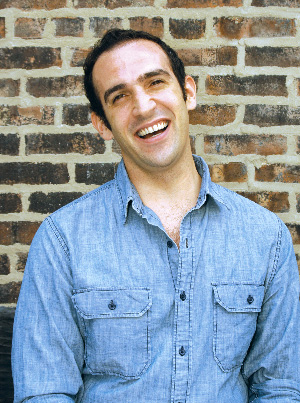

There’s a heavy focus on Rhône and Provence on your list of best-selling wines. Is that coming from the diners or from you?
That’s me. I do have pinot noir, chardonnay and cabernet. That’s all there. If they ask for it, usually I say, “But I also have this, and this is what matches with the food.”
We track it through Avero management software, which tells you exactly how many glasses you pour of each wine. Burgundy, Rhône and Provence make up about 80 percent of our sales; Rhône and Provence on their own, about 40 to 45 percent. Plus Burgundy is more expensive. The thing about Provence, Rhône, Languedoc and Roussillon, you can really do okay for $30. Burgundy, it’s dog shit. There’s no good Burgundy on a restaurant wine list for $30. You can’t crop pinot as you do grenache or syrah, it doesn’t happen.
And you suggest the Coudelet de Beaucastel with Coq au Vin…Isn’t that typically a dish for a lighter wine, like Burgundy?
Part of the Coudelet is in Châteauneuf du Pape, part of it is not; so in essence, it’s the same vineyard as Beaucastel. The Perrins just isolate it and sell it as a Côtes du Rhône. It’s really a baby Châteauneuf du Pape. With the dish, it’s the smokiness of the lardons that does it for me, the savory meatiness of that works with a Côtes du Rhône. Châteauneuf full-blast wouldn’t work, but something lightish, especially a 2008—it’s not considered a great year by the press, but the wine has a lot of acidity and it works really well.
Here’s what shocked me: Your Big Bottle pours—your large-format daily wine specials—placed fourth in your top by-the-glass offerings.
That blows me away too. The stuff sells like mad. It is a movement. Really, the bottles sell out so fast. I send out emails every week [with listings of what I’m opening when] and I’ve built a following for what I am pouring. People decide, I’m coming in Tuesday, Wednesday and Thursday. Every night I have people who come in for that—not for the food, for the wine. And none of those wines are under $20. It says something. People are really interested in wine, they’re willing to pay a little bit more if they can’t get it somewhere else, something they haven’t tasted before, maybe an older vintage. You don’t have to dumb it down. It’s kind of high-brow and they’re picking it up, which I love.
And a Muscadet in fifth place by the glass…
I had it bottled in magnum. Pierre Luneau did it for me—I got sixty cases of magnums and it sold like hot cakes. We have the terrace in the summer and Muscadet is the perfect wine for that—five of our ten tables were drinking Muscadet in the summer. That’s what you should be drinking: Muscadet and rosé. People get it. Who the hell would think Muscadet is huge.
Do people order the Santorini, the least expensive wine on the list?
It sells. It absolutely sells. It’s one of those wines that people can touch. They say, “Oh Santorini—yes, I saw Mama Mia.” Or, “Oh, my niece was married there.” It makes sense to them and it makes it easier to sell. Then there are the people who say, “Oh Santorini. Let’s support their economy. They need our help.” It’s a very New Yorker financial thing to say, and I hear it all the time.
You note that prices on your wine list have increased.
Maybe it’s because the restaurant is established and we seem to get busier and busier every year. And prices seem to be increasing from the producer. That’s reflected in it as well.
What surprised you this past year?
Greek wines: I love that people are interested in Greek wine. And riesling— as in when someone comes in and they buy a bottle of Zind Humbrecht Rangen Riesling. That’s always wow. I wonder, “How do you know what that is?” Locals on the Upper West Side, many are in their fifties. You look at a guy like Paul Grieco, he’s bringing riesling to the young of this country. So when you see someone older getting into it, you think, “You are definitely not the target market. That’s unexpected and cool.”
Joshua Greene is the editor and publisher of Wine & Spirits magazine.
















